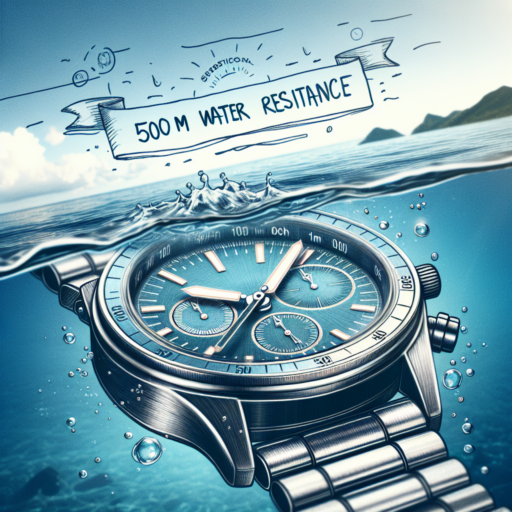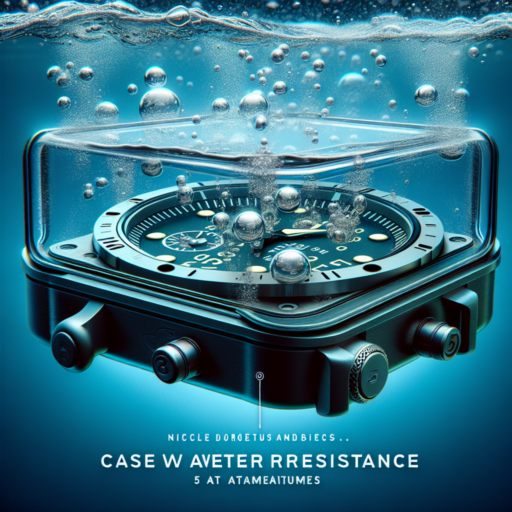Can I swim with a 50m water resistant watch?
When considering whether you can swim with a 50m water resistant watch, it’s essential to understand what the term «50m water resistant» truly implies. This rating suggests that the watch can withstand pressures equivalent to a depth of 50 meters underwater without succumbing to water ingress. However, this doesn’t automatically equip it for all types of aquatic activities, especially those involving high-velocity water contact.
It’s a common misconception that a watch labeled as 50m water resistant is suitable for swimming. In reality, the water resistance indicated refers to static pressure in a controlled environment, not the dynamic pressure changes encountered during swimming strokes. Fast movements in the water and the impact when entering the water can exert pressures on the watch that exceed those present at a static depth of 50 meters.
Activities Advised with a 50m Water Resistant Watch
- Casual swimming: Light swimming on the surface, without diving or jumping into the water, is generally acceptable.
- Daily wear: Activities such as showering or washing your hands pose no significant threat.
- Avoidance of high-impact water sports like water skiing, diving, or high-speed aquatic activities is paramount to prevent damage.
The distinction between water-resistant and waterproof is pivotal when choosing a watch for swimming. A 50m water-resistant rating provides a certain level of protection against water ingress but is intended for incidental contact with water rather than deliberate submersion or swim activities. For avid swimmers or those frequently engaging in water sports, watches with higher water resistance ratings are recommended.
No se han encontrado productos.
What does 50 m water resistant mean?
Understanding the term «50 m water resistant» is crucial for anyone who owns or is considering the purchase of a water-resistant watch. This specification indicates that the watch is designed to withstand pressures equivalent to a depth of 50 meters (about 164 feet) under water. It’s a common feature found in many contemporary watches, designed to provide a level of protection during typical water-related activities.
However, the notion that a «50 m water resistant» watch can be used for diving up to 50 meters deep is a misconception. In reality, this rating suggests that the watch is suitable for light swimming, bathing, and shallow water activities. It’s important to note that activities involving high-velocity water or deeper submersion could exceed the pressure limits of what the watch can handle, potentially leading to water damage.
The testing process for determining a watch’s water resistance is based on static pressure in a controlled environment. This means the watch is subjected to the pressure equivalent of a 50-meter depth, but it does not account for added pressure from movement. Thus, while a 50 m water resistant marking implies some level of durability, it does not guarantee the watch can be safely used for all types of aquatic activities.
Is 50m water resistant to bar?
Understanding the water resistance rating of watches can sometimes be confusing, especially when it comes to converting meters to bar. A watch marked as 50m water resistant is often regarded as suitable for swimming but not for diving. But what does this mean when converted into bar pressure units? Generally, 1 bar equals approximately 10 meters of water depth. So, in essence, a 50m water-resistant watch is also resistant up to 5 bar of pressure.
It is important to consider that the term water resistant to 50 meters does not imply that one can dive to a depth of 50 meters without causing damage to the watch. The rating primarily indicates that the watch can withstand pressure equivalent to a static depth of 50 meters under laboratory conditions. Real-life factors such as movement in the water, temperature variations, and the aging of seals can affect the watch’s water resistance over time.
When looking at water resistance, understanding the relationship between meters and bar is crucial for ensuring the longevity and functionality of your watch. Whether you’re a swimmer or someone who just wants to ensure their timepiece can handle a splash, knowing the specifics behind the 50m water resistance rating can guide you in selecting the appropriate watch for your needs. While 5 bar is adequate for everyday use, including swimming, it is not designed for high-impact water sports or deep-sea diving.
Is 50m water resistant OK for surfing?
Certainly, when contemplating the suitability of a 50m water-resistant watch for surfing, there are various aspects to consider. Although «50m water resistant» suggests that a device can withstand pressures equivalent to a depth of 50 meters, this doesn’t directly translate to its capability for surfing activities.
Understanding Water Resistance Ratings
It’s pivotal to understand what water resistance ratings actually imply. The rating of 50m typically indicates that the watch can survive brief immersion in water, making it suitable for activities like swimming. However, surfing involves more dynamic and high-pressure water contact that might surpass the test conditions under which the watch’s water resistance was determined.
Factors Affecting Water Resistance in Surfing
- Water Pressure: Unlike stationary submersion, surfing subjects a watch to variable pressures, especially when wiping out or diving under waves. These pressures can exceed what the watch is rated to handle.
- Saltwater Corrosion: Another consideration is the salt content in seawater, which can corrode the seals that keep a watch water-resistant over time, potentially reducing its effectiveness against water ingress.
Furthermore, it’s important to consider the age and condition of the watch. Over time, seals and gaskets that ensure water resistance can deteriorate, especially if not regularly maintained. This degradation might compromise the integrity of a 50m water-resistant watch, making it less suitable for surfing conditions.




